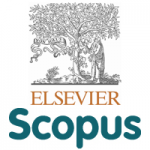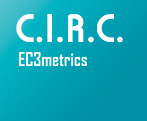Mujeres y emblemas: una visión simbólica de la condición femenina en la Edad Moderna
Resumen
ABSTRACT: The difficult situation of women in the Modern Period, marked by the strong patriarchal and androcentric character of the official culture and ideology of the moment, and their high degree of social marginalization, has been frequently analysed through various literary sources such as theatre, fiction or travel literature, collections of proverbs and sermons, and, above all, moral and doctrinal texts. However, for some time now, a new approach to the issue has been attempted which has proven to be of singular importance when observing the effect of the aforementioned directives of the dominant ideology on the familial and social role of women: illustrated symbolic literature. Through its various forms of expression--emblems, badges, hieroglyphics, allegories--this genre became, especially from the final decades of the 16thcentury, a perfectly calibrated and effective instrument when channelling the political, moral and doctrinal orientation of citizens. In the present study I offer an overview of how emblematic treatises and repertoires of allegories offer us excellent examples of the construction of the symbolic image that the dominant elites of modern times seek to spread and impose on the female gender, and their well-established and channelled behavioural norms.
KEYWORDS: Modern Period; Emblems; Female Marginality; Androcentric Control.
RESUMEN: La difícil situación de la mujer en la Edad Moderna, marcada por el fuerte carácter patriarcal y androcéntrico de la cultura e ideología oficiales del momento, y su alto grado de marginación social han sido analizados con frecuencia a través de diversas fuentes literarias como el teatro, la literatura de ficción o de viajes, las colecciones de refranes y sermones, y, sobre todo, los textos morales y doctrinales. Sin embargo, desde hace algún tiempo se está ensayando una nueva vía de aproximación al problema, y que resulta de singular importancia a la hora de constatar las mencionadas directrices de la ideología dominante sobre el papel familiar y social de la mujer: la literatura simbólica ilustrada. Por medio de sus diversas formas de expresión --emblemas, empresas o divisas, jeroglíficos, alegorías...--, este género se convirtió, sobre todo a partir de los decenios finales del s. XVI, en un instrumento perfectamente calibrado y eficaz a la hora de encauzar la orientación política, moral y doctrinal de los ciudadanos. En el presente trabajo ofrecemos una panorámica de cómo los tratados emblemáticos y los repertorios de alegorías nos ofrecen inmejorables ejemplos de la construcción de la imagen simbólica que las élites dominantes de los tiempos modernos pretenden difundir e imponer del género femenino, y de sus bien establecidas y canalizadas normas de comportamiento.
PALABRAS CLAVES: Edad Moderna; Emblemática; marginalidad femenina; control androcétrico.
Palabras clave
Texto completo:
PDFEnlaces refback
- No hay ningún enlace refback.
URL: http://ojs.uv.es/index.php/IMAGO
Administración: C/ Universitat, 2 · 46003 Valencia.
M.Elvira.Mocholi@uv.es, Elena.Monzon@uv.es, mahiques@uv.es
ISSN digital: 2254-9633 / ISSN impresión: 2171-0147
MÉTRICA EN SJR BASADA EN SCOPUS
INDEXACIÓN






![]()







